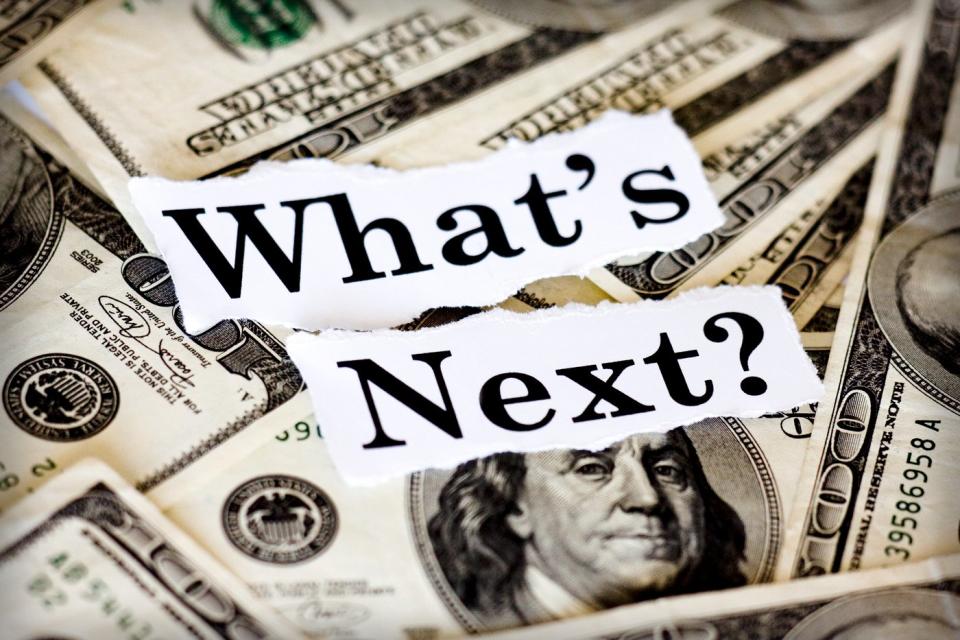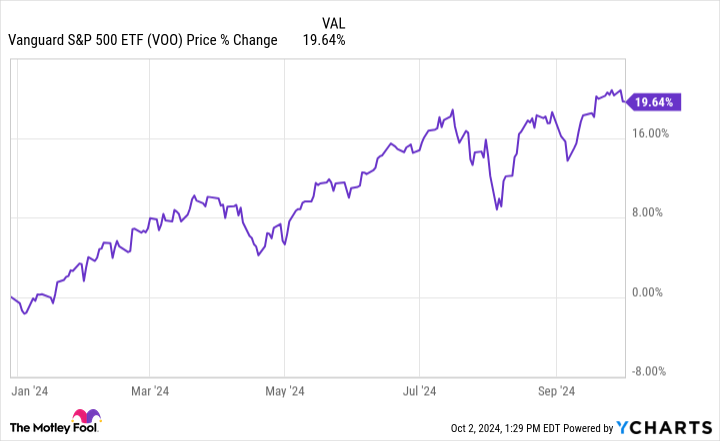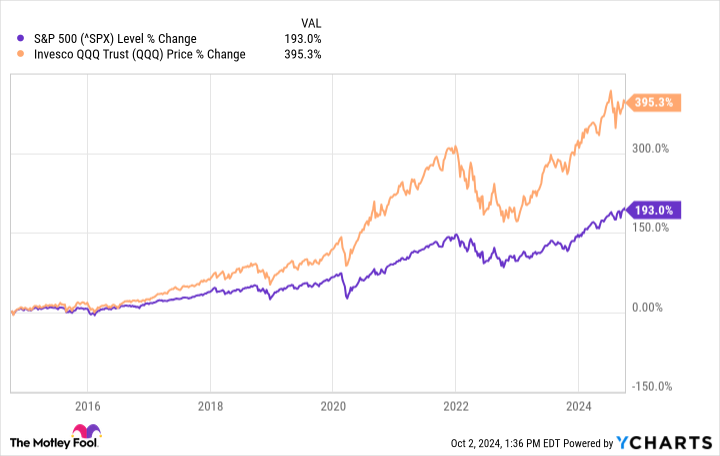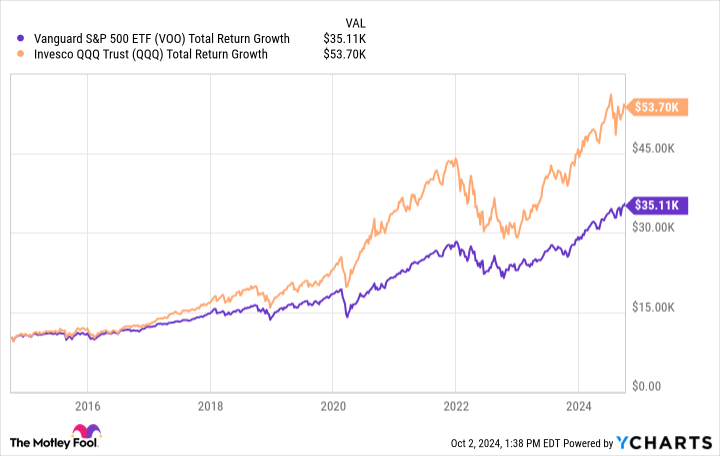Here Are My 2 Favorite ETFs in October
There is little doubt that the best way for the average person to create wealth over the long term is through investing. While over 60% of Americans own stocks, most of that is through buying into funds that own multiple stocks. The direct ownership of stocks accounts for a little over 20%.
For most people, investing in stocks through vehicles such as exchange-traded funds (ETFs) is a great option. Let's look at two ETFs I'd be buying this month with cash I have available for investing.
1. Vanguard S&P 500 ETF
The Vanguard S&P 500 ETF (NYSEMKT: VOO) is a classic, and for good reason. The ETF tracks the performance of the S&P 500 stock index, which tracks the stock performance of roughly 500 of the largest public companies traded in the U.S. (as ranked by market capitalization (market cap)). When investors talk about the performance of the stock market, they are quite often referring to the performance of the S&P 500 index.
The Vanguard S&P 500 ETF has generated strong returns over the years. Over the past decade, the ETF has had an average annual return of 13.3% (as of the end of September 2024). Over the past five years, it's been even stronger, up an average of 15.9%. Meanwhile, the ETF is up nearly 20% year to date.
While investors may fret about investing in the ETF with the S&P at all-time highs, they shouldn't. In fact, according to a study from J.P. Morgan, since 1970, investors actually would have seen better returns investing only on days the S&P hit an all-time high compared to any random day.
After one year, investing at all-time highs would result in an average annual return of 9.4% versus 9% on any random day. After two years, investing only on days the S&P 500 hit an all-time high would result in a 20.2% gain versus 18.5% investing on any random day.
This speaks to how bull markets tend to last much longer than bear markets, with the medium bull market lasting three times longer than the average bear market.
An S&P 500 ETF should be a core holding in any investor's portfolio, and the Vanguard ETF is a great option with a minuscule expense ratio of 0.03%, meaning investors get to keep virtually all their gains with little payment going to the fund.

2. Invesco QQQ ETF
Technology continues to change the world, so perhaps it is not surprising that many of the world's largest companies today come from the tech sector. As such, I think it is a good idea to add a little more tech exposure to one's portfolio.
One way to do that is with the Invesco QQQ ETF (NASDAQ: QQQ), which tracks the Nasdaq-100 index. This is a very tech-heavy weighted index, with nearly 65% of its portfolio in the tech sector and over 13% in consumer discretionary stocks, which include some pretty tech-adjacent names, such as Amazon and Tesla.
The ETF has been a huge winner over the past decade, outperforming the S&P by a fair amount. As of the end of August, its annual average return over the past 10 years is 21.2%. The ETF has outperformed the S&P 500 index 87% of the time over the past decade and 83% over the past five years.
The ETF's 10-year cumulative return (including dividends reinvested) is 437%. If you invested $10,000 in Invesco QQQ 10 years ago, it would be worth $53,700 today, and a $10,000 investment for the Vanguard S&P ETF would be worth $35,110 based on its 249.54% 10-year cumulative return.
While the Invesco QQQ ETF carries more risk due to its high concentration in a single sector, I think it is set to continue to outperform over the next decade. The artificial intelligence (AI) revolution is still in its early days, and this trend will likely help power many of the top tech names higher in the years to come. The Invesco QQQ ETF, meanwhile, is a great way to play this trend, with a low expense fee of 0.2%.
I'd buy both the Vanguard S&P 500 ETF and Invesco QQQ ETF this month and continue to consistently invest in both over time through a dollar-cost averaging strategy. This strategy is ultimately a great way to create wealth over the long term.
Should you invest $1,000 in Vanguard S&P 500 ETF right now?
Before you buy stock in Vanguard S&P 500 ETF, consider this:
The Motley Fool Stock Advisor analyst team just identified what they believe are the 10 best stocks for investors to buy now… and Vanguard S&P 500 ETF wasn’t one of them. The 10 stocks that made the cut could produce monster returns in the coming years.
Consider when Nvidia made this list on April 15, 2005... if you invested $1,000 at the time of our recommendation, you’d have $728,325!*
Stock Advisor provides investors with an easy-to-follow blueprint for success, including guidance on building a portfolio, regular updates from analysts, and two new stock picks each month. The Stock Advisor service has more than quadrupled the return of S&P 500 since 2002*.
*Stock Advisor returns as of September 30, 2024
JPMorgan Chase is an advertising partner of The Ascent, a Motley Fool company. John Mackey, former CEO of Whole Foods Market, an Amazon subsidiary, is a member of The Motley Fool's board of directors. Geoffrey Seiler has no position in any of the stocks mentioned. The Motley Fool has positions in and recommends Amazon, JPMorgan Chase, Tesla, and Vanguard S&P 500 ETF. The Motley Fool has a disclosure policy.
Here Are My 2 Favorite ETFs in October was originally published by The Motley Fool


